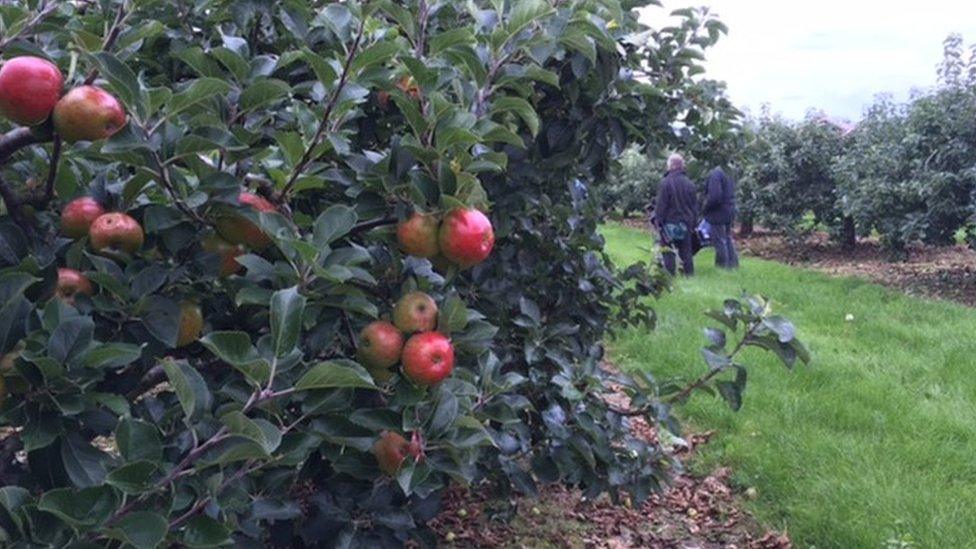County Armagh apple growers: Harvest worth £20m a year
- Published

Edmund Allen aims to produce 1,000 tonnes a year
£20m a year, that is what the harvest is worth to the apple growers of the Orchard County.
There are 250 commercial growers in County Armagh, supplying the cider, bakery and fresh markets.
And right now, they are in the middle of a six-week window to get them in.
They are mostly of the Bramley variety, with some eating apples mixed in.
Edmund Allen farms 70 acres of orchard on Grange Lodge farm outside Loughgall.
He aims to produce 1,000 tonnes a year, with about half of it going to make fillings for the bakery trade.
There are 250 commercial growers in County Armagh, supplying the cider, bakery and fresh markets
Most of the rest, he sells to cider makers and to shops and supermarkets.
But what is it about apples and Armagh?
Edmund provided his own explanation.
"Apples have been grown here for, we think, around 3,000 years," he said.
"It is the climate, we're near Lough Neagh which acts as a heat sink and keeps the temperature that little bit higher.
"So it's that, the fact that the soil type is good and the experience that we've built up over generations growing apples."
But it can be a precarious business. A sharp frost in early May, killed the blossom and nearly put paid to a year's work.
"I looked out the window and I didn't want to go out near the orchard, I knew what had happened," Edmund added.
"All the blooms I picked off had gone brown, they were dead.
"But we are really truly amazed at the apples that have set, we couldn't find any live blooms and yet nature has healed itself and we have sufficient apples to meet the market requirements."
Running costs
Some orchards are only returning a 50% harvest due to that frost, but others are up to 90%.

In the past, there used to be 100 trees to the acre
Edmund says prices for his apples have been fairly "stable".
It costs him £40 a bin to produce the fruit. If he can sell them for between £60-80 he is doing well.
But he says he would need £100-110 a bin to reinvest in the business.
His annual running costs are around £80,000 and he tries to replant 10% every five years.
In the old days, there used to be 100 trees to the acre.
Now they are using smaller varieties to get more in and there could be 400 trees in the same space.
And in a another attempt to push up productivity, Edmund is looking to the Netherlands for help.
Native bumblebees caught here are shipped there for breeding, then brought back.
They are being trialled because they are better suited to the climate and are a bit harder working than the hundreds of thousands of honey bees that Edmund relies on to pollinate his trees.